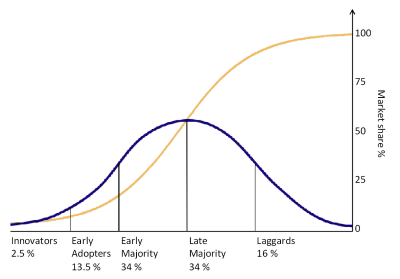Early in Mel Brooks’ “The History of the World: Part I” Moses goes up the mount to see the burning bush and receive the word of God. Coming down with three tablets Brooks as Moses says “The Lord, the Lord Jehovah has given unto you these fifteen... [drops one of the tablets] Oy! Ten! Ten Commandments for all to obey!
My own experiences have gone in the other direction. When working with CIOs and their staffs to define the concept of the “IT Utility” we proposed seven major attributes that a utility has. My CEO said that there were “Ten Principals of the IT Utility.” We asked him to describe the other three. He suggested he only knew there were ten and that we had to go back to work. With a little word-smithing, conceptual parsing and verbal padding we got to the magic number.
It is with this jaundiced view that I recently read Brian Solis’ Ten Stages of Social Media. If you haven’t read Solis you might want to. He’s a very knowledgeable marketeer especially in the realm of Social Media, its role in marketing and how corporations can take advantage. That said I doubt there are “Ten Stages” of it (or much else). And, although the article has much to offer it doesn’t lay out “stages” as much as a combination of things to do or accomplish (e.g. Finding a Voice and Sense of Purpose) and management concepts (e.g. Business Performance Metrics).
I was expecting something along the lines of the Diffusion of Innovations model generally popularized by Geoffrey Moore in his book “Crossing the Chasm.” The chart below shows how different groups of consumers, described by
- Diffusion of Innovations by
In this model Innovators are well-informed risk-takers who are willing to try an unproven product. Early Adopters tend to be educated opinion leaders who, based on the positive response of innovators, begin to purchase the product. The Early Majority are careful consumers who tend to avoid risk. The early majority adopts the product once it has been proven by the early adopters. The Late Majority are somewhat skeptical consumers and Laggards avoid change and may not adopt a new product until traditional alternatives no longer are available.
But the question remains, what is the state of Social Media inside large organizations, individually, and what should they do about it?
Working on Step 2
For a guide map on this we need to turn to what Dick Nolan and Chuck Gibson called “The Four Stages of EDP Growth.” Taking Everett’s model and defining the market to be served as a business and its functions and processes Nolan and Gibson described four stages a company goes through in learning how to manage IT (Initiation, Contagion, Control, Maturity) and the four “growth processes” that influenced progress (Applications,Technologies, Organization and Management, Users):
Originally designed to examine all of IT in a company I suggest we can employ this model to examine the progress and prospects for Social Media within companies.
If you consider your own company and its use of Social Media in business you should be able to place yourself on this map, growth process by growth process. I suspect most companies are finding that Social Media use is proliferating, that it is doing so on multiple, replicating platforms, that the organization that supports it is becoming more than technical, they’re supporting expansion and that the users of the technology are both excited and uninformed.
Healthy progress requires that the four growth processes are at similar stages of maturity. If your users remain totally unaware while your governance actions reflect the strictures of the 30 year old IT function you will have a mismatch, conflict and waste. If you are trying to "proliferate" Social Media across your possible uses but do so only with the one technology your initial trial used you will have another mismatch, more conflict and more waste.
You may find that the customer care organization’s use of Social Media has made more, or less, progress through The Stages than your product development organization. Examine where they each are, the overall structural health of their efforts. Take actions to make them healthy and set a date to examine whether to Rationalize their applications and begin a process of Integration.
From “The Department of Pay Me Now or Pay Me Later” if its likely that currently independent efforts will be rationalized in the future management must make it hard, very hard, for them to deliberately make technical and implementation design choices intended to slow that future day down. Such actions are selfish and expensive and in almost all cases eventually fail. Let the market decide, not fiefdoms.
Your customers have the option of buying into a new product or technology. Inside a corporation there are two models for the diffusion of innovations: collective innovation decisions and authority innovation decisions. The collection-innovation decision occurs when the adoption of an innovation has been made by a consensus among the members of an organization. The authority-innovation decision occurs when the adoption of an innovation has been made by very few individuals with high positions of power within an organization (Rogers 2005, p. 403).
If consensus can’t be achieved then an authority-intervention decision will be made. For this instance Brooks, this time playing Louis XIV at


Great post. Now I want to dust off my History of the World DVD and watch it.
ReplyDelete